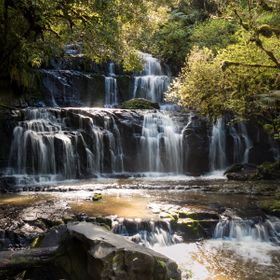

noellebennett
FollowPossibly one of the most famous features of St Clair, these wooden piles were erected in 1904 in a attempt to protect this beautiful beach from erosion ...
Read more
Possibly one of the most famous features of St Clair, these wooden piles were erected in 1904 in a attempt to protect this beautiful beach from erosion
Read less
Read less
Views
892
Likes
Awards
Superb Composition
Absolute Masterpiece
Top Choice
Peer Award
Outstanding Creativity
All Star
Magnificent Capture
Virtuoso
Top Ranks
Categories
Same photographer See allBehind The Lens
Discover more photos See all
Behind The Lens
Location
This photo was taken at the popular surfing venue of St Clair. St Clair is located on the Pacific Ocean coast about five kilometres from Dunedin city centre on the southwesternmost part of the coastal plain.Time
Taken at 6.20pm in late April (which is early autumn down here in the antipodes), I just love the colours in this image! The day had been cool and a little unpromising...and certainly gave no hint of what was to come. We had spent part of the afternoon at Tunnel Beach with fairly dense cloud scurrying across the sky. Every now and then, the clouds would break to reveal tantalising glimpses of blue and let some very welcome, if short-lived, sunshine through to warm us up. As evening drew on we headed for the cafes of St Clair and were rewarded with these fabulous coloursLighting
For me, the colours of this sunset were absolutely compelling. I loved the subtle, pastel shades - the gentle creams, tangerines, light purples, pale turquoises on the horizon - and the manifestation of the darker shades of those colours overhead. Add to that the contrast of the strong aquamarines of the ocean and the white of the surf and I had sheer perfection in front of my lens. We often hear people refer to the golden hour but that doesn't even to begin describe the light I had for this photoEquipment
The image was made using a Panansonic DMC-G3 camera with a Lumix G Vario 14-42 lens. The camera was mounted on a tripod and shot using a cable releaseInspiration
Erosion is a long-term and ongoing concern at St Clair and the wooden posts that I used to lead the viewer's eye through to White Island in the distance are the last surviving sets of wooden posts from a 1904 effort to try to limit erosion. These posts are a bit like 'that tree' in Lake Wanaka (try a search on ViewBug - I know it's on here!) - everyone has photos of them - so I had avoided them. But this light was crying out for a foreground and an end point so what better than the ubiquitous posts transporting you through to White Island and those fabulous colours. The surf playing around the base of the posts forming the exquisite patterns complemented the scene perfectly.Editing
This image was shot as a RAW image with a failry high ISO (800) because of the relatively low light levels and my desire to capture those colours. I ran the image through Define 2 to remove the worst of the noise and then Color Efex just to bring out the contrast a little. From there, I did minor tweaks with white balance and shadows in Lightroom 4 and that was it.In my camera bag
My camera bag is ever evolving...and shared with my husband so there are the occasional squabbles over lenses!! I now use a Panasonic DMC-GH4 camera which I absolutely love (I had a brief dalliance after the G3 with my husband's cast-off Olympus E-M5 which I didn't get on with at all - hence moving to the GH4). My must-have lenses now are the Lumix G Vario 100-300 telephoto lens which is my latest addition and which is a fabulous lens; an Olympus M.12 - stunning for imaging the Milky Way which is another passion of mine and a Leica DG Macro-Elmarit 45 which is another stunning lens and just possibly my favourite. Apart from that I have the usual cable release and various elements of the Cokin filter systemFeedback
I suppose there are two big pieces of advice I would offer. You need to have an infinite amount of patience - be prepared to make images and for them not to be quite what you wanted or visualised and to go back and try again...and again...and again. But, as I did with this image also be prepared to seize the opportunity...and keep watching what is going on out there. The weather down here on the South Island of New Zealand can be incredibly fickle - the so-called four seasons in one day syndrome certainly applies here! If someone had asked me two hours before I made this image I'd have said there wasn't a hope of getting a good evening shot. How wrong I was! I don't often see these colours at sunset and haven't managed anything similar since. And study the whole scene. Watch for patterns that will increase the interest, leading lines and points of interest in the distance. Try to help the viewer feel what you did when you took the image. And change your perspective. You don't need to take everything from standing height. Be prepared to get down low and see if that improves your image. Most of all be prepared to experiment and have fun - it's the best way to learn











































